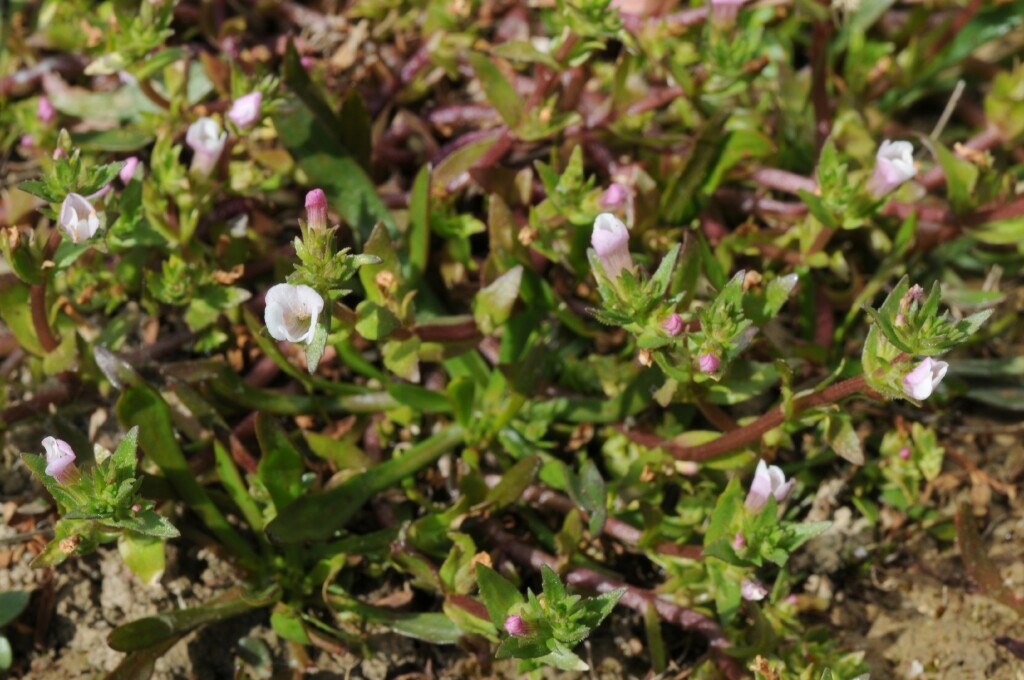Gratiola pubescens
R.Br.Erect to procumbent perennial herb 2.5–20 cm high, sessile glands overtopped, except for corolla and older growth, by finely glandular pubescence, sometimes with scattered flat eglandular hairs; branches in larger plants creeping and rooting towards base. Leaves narrow-elliptic to lanceolate, 0.7–2.6 cm long, 2–6 mm wide, base cuneate or stem-clasping, margins toothed. Flowers solitary in bract axils, sometimes only 1 at a node; pedicels 1–2.5 mm long; bracteoles 3–4.5 mm long. Sepals 3.5–6 mm long; corolla 10–12 mm long, white or pink-purple, with a yellow tube and a pale inner face of the limb, hirsute inside on the upper side; staminodes 2. Capsule broad-ovoid, 3.5–4.5 mm long; style c. 2 mm long. Flowers Oct.–Mar.
LoM, Wim, GleP, VVP, VRiv, MSB, MuF, GipP, OtP, WaP, Gold, CVU, GGr, DunT, EGL, EGU, WPro, HSF, HNF, OtR, Strz. Also WA, SA, NSW, Tas. Scattered in Victoria south of the Great Dividing Range, occurring in permanently or seasonally damp or swampy ground and in shallow pools, in heavily shaded sites (e.g. Melaleuca scrubs) to open sites (grasslands, verges of dams etc.).
Barker, W.R. (1999). Scrophulariaceae. In: Walsh, N.G.; Entwisle, T.J., Flora of Victoria Vol. 4, Cornaceae to Asteraceae, pp. 483–528. Inkata Press, Melbourne.
 Spinning
Spinning



